Recommend an interesting encyclopedia of coffee, "you don't know Coffee"
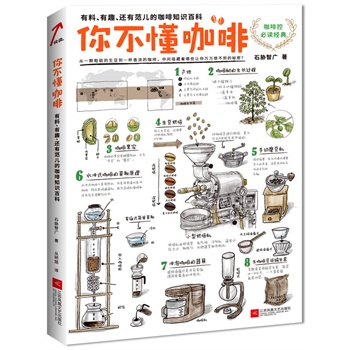
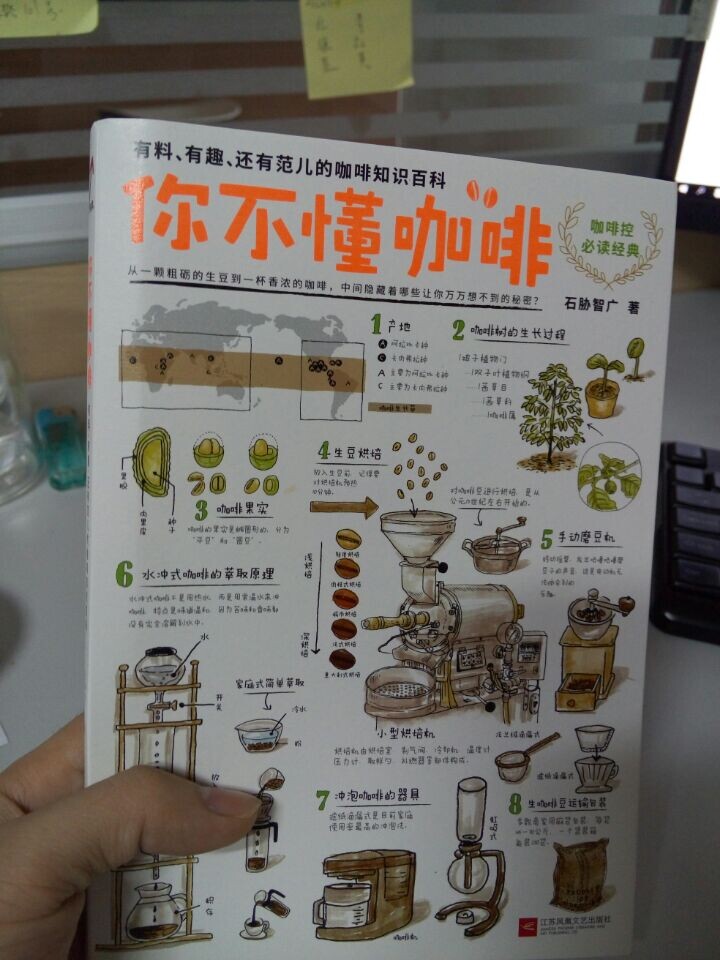
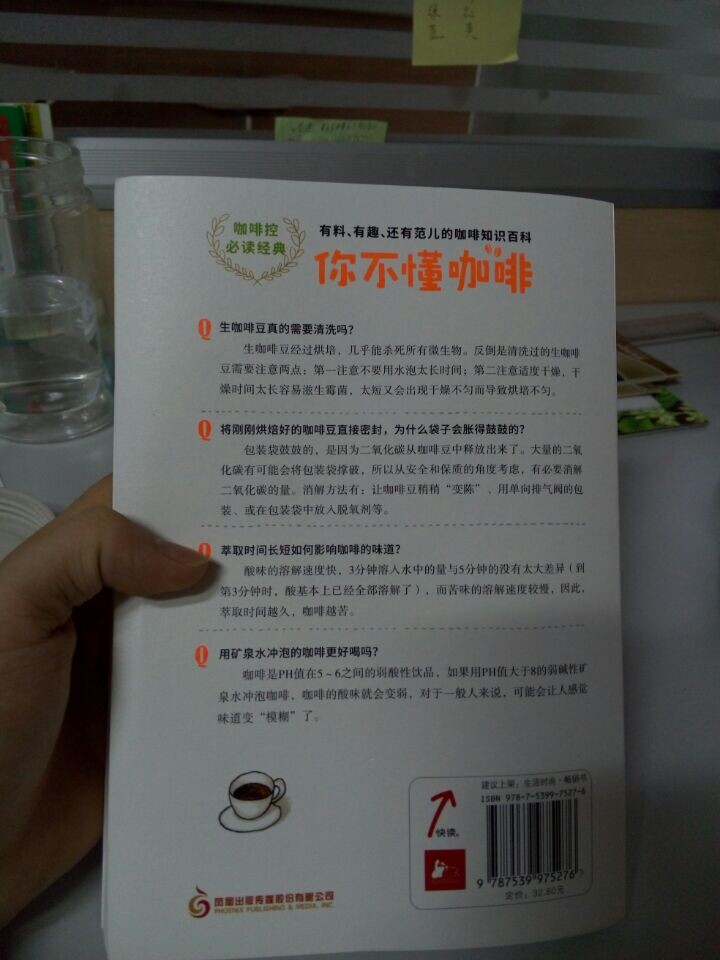
Content summary
If you like coffee, do you really "know" coffee? Do raw coffee beans really need to be washed? Seal the freshly roasted coffee beans directly. Why is the bag bulging? How does the extraction time affect the taste of coffee? Does coffee made with mineral water taste better? A small cup of coffee actually hides a lot of unexpected secrets! This book, "you don't understand Coffee (interesting and stylish Encyclopedia of Coffee knowledge)," edited by Shiwei Zhiguang, goes against the attitude of the same kind of book "knowing but not knowing why". It takes you through the surface of coffee to explore the causes hidden behind the phenomenon, to taste the details of the process, and to accurately navigate for you in the colorful coffee world. From the "cold knowledge" of the varieties of origin, the "micro-principles" of baking and extraction to the personal know-how of all kinds of appliances, and even the small bags are peeling off their cocoons and talking about them, it is a truly informative, interesting and stylish encyclopedia of coffee knowledge. Open this book and read it carefully, you will know more about the fun and beauty of coffee.
A brief introduction to the author
Doctor of the University of Tokyo, lecturer of the Coffee Identification Committee of Japan, winner of the all-Japan Coffee Association President Award, a coffee fanatic who combines his work with hobbies perfectly. He joined Kansai Coffee roasting Alliance in 1999 and has been in charge of coffee manufacturing process, quality management and research and development. Since 2001, he has traveled to various coffee producing areas around the world, studied coffee from cultivation to extraction, and published a number of best-selling books related to coffee, including the barista Identification textbook. Since its launch, this book has perennially topped the list of coffee books in Japan, South Korea and Taiwan, and is known as the "coffee control must-read classic".
Catalogue
The first chapter is to understand the common sense of coffee Q1 coffee beans are beans? What kind of plant is coffee? What is the ancestor of Q2 coffee tree? In what way is it popularized? How does Q3 coffee tree grow and bear fruit? Q4 which countries and regions grow coffee? What are the fruits and seeds of Q5 coffee? Q6 what procedures do you have to go through before the coffee fruit can be turned into a real cup of coffee? [have a cup of coffee break] how much coffee is consumed in the world every day? Do you drink differently from place to place? The second chapter is to understand the ingredients of coffee Q7 raw coffee beans are made of what ingredients? Is Q8 caffeine harmful to your health? Will there be less caffeine in deeply roasted coffee beans? Q9 how much caffeine is in a cup of coffee? Is it more than fried tea and black tea? Q10 how is decaffeinated coffee made? What is the bitterness in Q11 coffee? What is the sour taste in Q12 coffee? The more mature the Q13 coffee fruit, the sweeter the coffee beans will really be. Why do Q14 roasted coffee beans turn brown? Q15 will smell when roasting raw coffee beans. Why? What is the chlorogenic acid in Q16 coffee? Will the taste of Q17 coffee change over time? How to preserve the original flavor? Q18 coffee beans put for a long time, what will be the change? Q19 does coffee made with mineral water taste better? [have a cup of coffee to take a break] what is the so-called shade tree? The third chapter is how to brew delicious coffee-the selection, extraction, grinding and preservation of coffee Q20 coffee beans and coffee powder, which is better to buy? Q21 what is the key to choosing a store when buying coffee? What are the coffee-making utensils for Q22? How does Q23 extract the ingredients of coffee? What is the principle of extraction? Will Q24 coffee taste different due to different brewing methods? Q25 uses filter paper dripping method to brew coffee, what should be paid attention to? How many types of coffee drying racks are there in Q26? What are their own characteristics? Q27 what kind of drip-type special kettle should I use? Why is it necessary to pour water in the same way as "Yi"? Q28 Why does coffee powder swell after pouring water? If there is no expansion, is it because the coffee powder is not fresh? Q29 how to try filter paper dripping to brew coffee with stable export flavor? What are the characteristics of Q30 flannel dripping type? What is the secret of brewing? What is the coffee extraction principle and brewing knack of Q31 French pressure kettle? What are the extraction methods and brewing tips of Q32 siphon coffee pot? Q33 how to use the coffee machine correctly? Q34 does the clear and transparent coffee taste good? Q35 what is the extraction principle of espresso? Can Q36 make professional espresso at home? What is the extraction principle of Q37 water coffee? Q38 iced coffee how to make it good? Why does Q39 grind coffee beans? How to distinguish the type and use of coffee powder particle size? What are the skills of Q40 grinding coffee beans? What kinds of Q41 coffee mills do you have? What are the characteristics and tricks of Q42 roller coffee mill? What are the characteristics and tricks of Q43 flat blade coffee mill? What are the characteristics and tricks of Q44 tapered blade coffee mill? What are the characteristics and tricks of Q45 blade coffee mill? Q46 what type of coffee mill should I buy? How can Q47 preserve coffee? [take a coffee break] what is the so-called sustainability of the coffee industry? The fourth chapter is to understand the processing of coffee-- the treatment, baking, mixing and packaging of raw beans. Q48 the more moisture the raw beans, the higher the freshness? The greener the raw beans, the higher the freshness? Q49 coffee raw beans some bright color, some dim color, has an impact on the taste? Q50 what is the so-called New Valley period, Chen Gu period beans? Do Q51 raw coffee beans really need to be cleaned? Can Q52 raw coffee beans be preserved for a long time? What's the secret of preservation? Q53 where can I buy raw coffee beans? What should I pay attention to when buying? Is roasted Q54 coffee always drunk after baking? Let's talk about the baking history of coffee beans. What is the roasting degree of Q55 coffee beans? How does the taste change with different degrees of baking? What kind of machine is the Q56 roaster? How many types are there in Q57 roaster? What is the structure of each? How are Q58 beans heated in the roaster? Q59 what happens to beans in baking? What do you mean by primary explosion and secondary explosion? What are the key points for attention in Q60 roasting coffee beans? What are the types of heat sources of Q61 roaster? What are their respective characteristics? What are the methods and characteristics of Q62 charcoal fire baking? How to choose the roaster for Q63? What is the skill of Q64 to keep the baking level stable? Q65 different producing areas, the method of bean coloring is also different when baking? Q66 Why is there grease on the surface of baked beans? Q67 Why are there wrinkles on the surface of baked beans? What are the family baking methods and tricks of Q68? Mixed Q69 Why would someone mix different kinds of coffee beans together? Q70 I am very confused about the mixing method. What are the characteristics of "mixing before baking" and "mixing after baking"? Q71 blended coffee is made by the method of "baking and mixing". Is it more fragrant? What is the naming rule for Q72 blended coffee? What is the expiration date for packaged Q73 coffee? What are the packing methods for Q74 coffee? What are their respective characteristics? Q75 what is the most suitable material for packing coffee? Q76 seals the freshly roasted coffee beans directly. Why is the bag swollen? [take a coffee break] what do you mean by "boutique coffee" and "premium coffee"? Chapter 5 want to know more about coffee-cultivation, selection, circulation, variety Q77 when cultivating coffee, can you use pesticides? What are the criteria for judging Q78 organic coffee? Does it have to taste better? How does Q79 coffee fruit turn into coffee beans? Q80 can anyone be engaged in the production of coffee? How is the price of Q81 coffee set? How are Q82 raw coffee beans transported? Q83 imported raw coffee beans will be mixed with shoddy beans and foreign bodies? What varieties are included in Q84 Arabica species? What kinds of seeds are included in the Q85 card? What does Q86 mean by the so-called "hybrid" of coffee? Q87 coffee or traditional coffee tastes better? Explanation of postscript nouns in references
Wonderful guide to reading
Q50 what is the so-called New Valley period, Chen Gu period beans? The new valley period refers to the harvest year of the raw coffee beans, while the Chen Gu period refers to the preservation of the harvested raw coffee beans in a specific temperature and humidity environment, at least a few years, or many decades, so that the beans can slowly change little by little. This method is called "aging". The composition of beans will gradually change with the passage of time. Usually raw coffee beans turn brown after roasting, and even without heating, this browning occurs on raw coffee beans, which is referred to as "aging". After a long time, the color of the beans will change from the initial green to a light brown. The method of aging raw coffee beans has been mentioned in the ancient literature of many countries, but why let the beans age a little bit? Supporters of Chen Gu period believe that aged beans taste softer, and the survey found that this is indeed the case. Because the sugars and chlorogenic acids that form the flavor of coffee will gradually lose in the aging process, so the taste will naturally become soft. However, if the taste of raw beans chosen at the beginning is not distinctive, then after "aging", the taste will be more monotonous. Therefore, the raw beans generally selected for aging are all raw beans with distinctive taste in the new valley period. In fact, without years of aging, no one will know the final result. Some raw coffee beans will lose too much flavor and lose their original commodity value in the aging process. Therefore, we can compare Chen Gu's raw coffee beans to the result of careful selection of labor and time. Generally speaking, the raw coffee beans within a year after harvest will have a unique taste similar to old rice, while the "aged" coffee beans will not have a pungent taste and emit a soft mellow smell. From this point of view, this method is really incredible. At this point, some people will ask, which is better, the beans in the new valley period or the old valley period? These two kinds of beans have very different tastes, but there is no question of which is better or worse. The only difference lies in personal preferences. I like the beans of the new valley very much, and I also enjoy the unique fragrance of the high quality beans of the old valley. Do Q51 raw coffee beans really need to be cleaned? Peeled raw coffee beans are bagged and transported everywhere, this method may not be very clean, and even some raw beans have water or mud stains on the surface. If you carefully examine the microbes on the surface of raw beans that are invisible to the naked eye, you will find that there are about 10,000 bacteria on every gram of raw coffee beans. However, this does not mean that raw coffee beans must be washed, because when roasted, most of the dust will fall off, and the high temperature of baking can kill almost all microbes. On the contrary, the washed raw coffee beans have two points to pay attention to. First, be careful not to soak for too long. If you soak in water for too long, many ingredients that make up the flavor of coffee will be lost; second, pay attention to moderate drying. Drying time is too long, it is easy to breed mold, drying time is too short, and there will be uneven drying, resulting in uneven baking. If cleaning is necessary, then I suggest washing quickly, drying moderately, and then using up the raw beans as soon as possible. On the other hand, I have a paradoxical idea that those who sell coffee will realize that raw coffee beans are not clean. Why do you think that? Because the hygienic requirements of raw coffee beans, the sacks that pack them and roasted coffee beans are not the same. Placing roasted coffee beans next to the sacks of raw coffee beans or leaving the sacks of raw coffee beans open are common phenomena in family bakeries. Although you don't need to make the coffee beans as clean and beautiful as the exhibits, you should at least know that it is unhygienic. In the industry, few people can treat coffee as "food"-what kind of food industry will grab the things of the guest population with their hands? Would put food and unsanitary things together? This is a problem of consciousness, which will bring harm to everyone. The dust on raw beans or gunny bags can easily induce allergies and cause erythema on people with allergic constitution. Therefore, I think that in order to make consumers feel at ease to eat coffee, every coffee practitioner should raise the hygiene awareness of coffee beans. P86-87
Important Notice :
前街咖啡 FrontStreet Coffee has moved to new addredd:
FrontStreet Coffee Address: 315,Donghua East Road,GuangZhou
Tel:020 38364473
- Prev
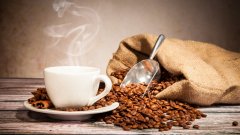
A few reasons to fall in love with coffee to be the one who knows coffee best
The clubhouse coffee lecture hall issued the student card today. Since the coffee lecture hall of our newspaper enrolled students last week, it has received nearly 100 registration hotlines in just a few days, and most readers have shown strong interest and expectation. The main courses of the coffee lecture hall, the basic qualities of baristas, and how to make good family coffee are all topics that readers are concerned about. From today on, I
- Next
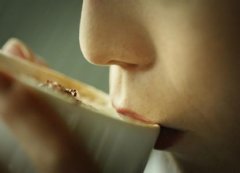
The nose is as important as the tongue in tasting coffee.
Two key points of tasting coffee: smell and taste! The nose is as important as the tongue. Most people may think that tasting is just with the mouth, but in fact, the nose plays a very important role in the tasting process, and many feelings about the taste are conveyed by the nose, so please make more use of your nose. It must be made clear that the coffee here refers to a hot drink without any addition.
Related
- Detailed explanation of Jadeite planting Land in Panamanian Jadeite Manor introduction to the grading system of Jadeite competitive bidding, Red bid, Green bid and Rose Summer
- Story of Coffee planting in Brenka region of Costa Rica Stonehenge Manor anaerobic heavy honey treatment of flavor mouth
- What's on the barrel of Blue Mountain Coffee beans?
- Can American coffee also pull flowers? How to use hot American style to pull out a good-looking pattern?
- Can you make a cold extract with coffee beans? What is the right proportion for cold-extracted coffee formula?
- Indonesian PWN Gold Mandrine Coffee Origin Features Flavor How to Chong? Mandolin coffee is American.
- A brief introduction to the flavor characteristics of Brazilian yellow bourbon coffee beans
- What is the effect of different water quality on the flavor of cold-extracted coffee? What kind of water is best for brewing coffee?
- Why do you think of Rose Summer whenever you mention Panamanian coffee?
- Introduction to the characteristics of authentic blue mountain coffee bean producing areas? What is the CIB Coffee Authority in Jamaica?

